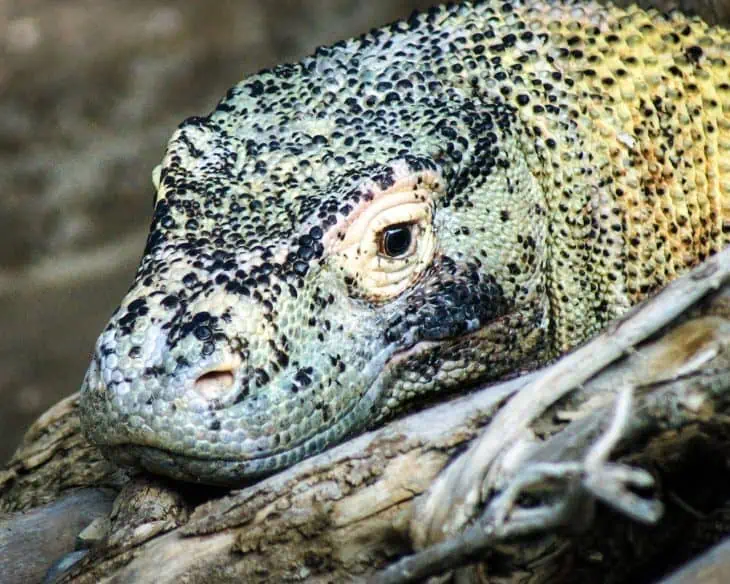
When people hear about the Komodo dragon, they usually create an image of fire-breathing dragons destroying large sums of land, as seen in fairytales. Those are definitely not Komodo dragon facts. Komodo dragons do not fly, nor attack medieval knights. But they are as ferocious as the dragons we read about in myths.
Komodo dragons are the heaviest lizards on Earth. They weigh around 200 pounds, and have broad, flat heads with rounded snouts, scaly skin, bent legs, and massive tails. Komodo dragons are also famous for their voracious appetite. Their flexible jaws, skulls, and stomach allow them to swallow big chunks of meat.
For millions of years, Komodo dragons have thrived in the harsh environment of Indonesia‘s Lesser Sunda Islands. Why Indonesia? It’s because Komodo dragons opt to live in hot and dry places. You’ll find them in savannas, tropical forests, and open grasslands. If you get bitten by a Komodo dragon, you will be in big trouble! Komodo dragons have glands in their jaw that secrete venom. They kill prey with their sharp teeth and venomous bite. But when one Komodo dragon bites another dragon, they don’t get poisoned since they are immune to their own venom.
These lizards are so fierce and savage that they can eat their own kind. Komodo dragons eat younger dragons and can also consume weak and older dragons. Living in such a brutal environment has definitely given them some crazy survival techniques. When under attack, young Komodo dragons hide in their poop or in the decayed intestines of other animals to keep other hungry Komodo dragons away from them.
Did all that make you even more interested in Komodo dragons? Then you better be ready because we have 50 more interesting and striking Komodo dragon facts below!
- Komodo dragon has a length of 3 meters or 9.8 feet.
- They weigh approximately 70 kilograms or 154 lbs pounds.
- Female Komodo dragons lay about 30 eggs.
- Hatchlings have an incubation phase of seven to eight months.
- Their teeth measure about 1 inch or 2.5 centimeters long.
- Komodo dragon is a species of lizard.
- It is the largest lizard in the world.
- Komodo dragons lay eggs.
- They dig holes for their shelter.
- Komodo dragons are good swimmers.
- Komodo dragons occasionally attack humans.
- They are popular in the zoo exhibits.
- Komodo dragons have scaly skin.
- They have claws and muscular tails.
- Komodo dragons have a poor sense of hearing.
- Baby Komodo dragons use their egg teeth to break the shell from the inside.
- A Komodo dragon’s tail is as long as its body.
- They are cold-blooded animals.
- Komodo dragons can bite each other during a fight.
- Komodo dragons hunt during the day because they have poor night vision.
Komodo dragons eat any kind of meat.
Komodo dragons are carnivores. They eat small rodents to the biggest water buffalo. Some of their common prey are monkeys, pigs, goats, and deers. While adult Komodo dragons prefer to hunt large prey, a baby lizard primarily depends on birds, lizards, insects, and eggs. Komodo dragons also feed on human bodies. They sometimes burrow in shallow graves.
Komodo dragons run at about 20 kilometers per hour.
Despite their big size, Komodo dragons can run at approximately 12 miles per hour or 20 kilometers per hour and can dive up to 4.5 meters or 15 feet.
They often use this speed when they hunt for food. In addition, they can blend in with their surroundings, which lets them lie and wait for a prey to pass. When it’s time, they will charge to give the victim a venomous bite.
Komodo dragons have good mouth hygiene.
Komodo dragons have good mouth hygiene. After eating, they will spend 10 to 15 minutes, rubbing their heads on trees and lip licking to clean their mouths. They also keep their mouths and teeth clean using their tongue, so no chunks of rotten meat will be stuck.
Their saliva has bacteria that may cause blood infection.
Some people observe that the Komodo dragon kills its prey via blood poisoning because its saliva has different strains of poisonous bacteria. They also say that the bitten part would be swollen and discolored. A TV program titled Lost Tapes compared the Komodo Dragon to a Megalania (an extinct giant goanna or monitor lizard).
Komodo dragons are venomous.
A new study indicates that Komodo dragons have glands in their jaw that secrete venom, which they use to kill their prey.
The toxins quickly decrease blood pressure, send victims into shock, and ultimately weaken them for the Komodo dragon to finally feed. On the contrary, when Komodo dragons bite each other, they don’t get poisoned as they are immune to the venom.
Komodo Island is a famous territory of Komodo dragons.
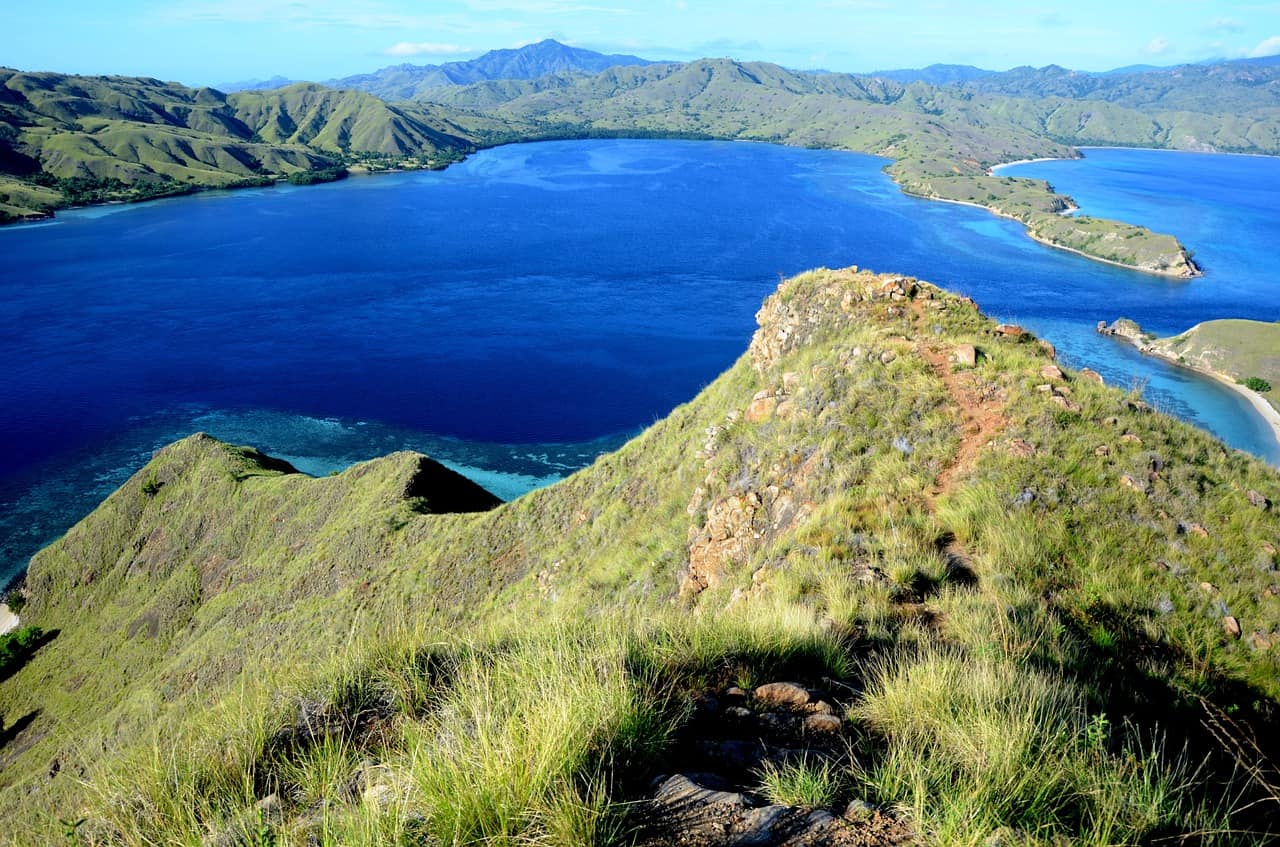
Komodo Islands is one of the 17,508 islands of Indonesia. The island is known as the habitat of the Komodo dragons. Aside from being noted to have Komodo dragons, the island is also a famous destination for diving and is known for its beach with pink sand.
Komodo dragons opt to live in hot and dry places.
Komodo dragons opt to live in hot and dry places. They also thrive in savannas, tropical forests, and open grasslands. Moreso, they are commonly found in the different islands of Indonesia like Rinca, Gili Montana, and Gili Dasami. Though Komodo dragons walk several miles a day, they have a small home range. They seldom venture to other islands, especially ones that were not part of their hatching site.
Komodo dragons most likely originated in Australia.
Some experts believed that Komodo dragons were first found in Australia and eventually scattered to the western parts of Indonesia. A few fossils found in Queensland suggest that the Komodo dragon originated in the country. About 4 million years ago, Australia was home to the largest lizard, the 16-foot-long (5 meters) Megalania, which died 50,000 years ago.
A Komodo dragon can eat up to 80% of its weight in one sitting.
Komodo dragons have flexible stomachs, jaws, and skulls. This allows them to swallow whole prey. When they catch larger animals, they tear them into large chunks of meat. They can eat up to 80% of the weight of their prey in just one meal. To boost digestion, they drag themselves to sunny locations. If food is undigested in their stomach for too long, it might poison them.
Young Komodo dragons spend their first few years on trees.
Considered cannibals, Komodo dragons don’t choose what they eat. In fact, they may include their offspring in their diet. Young Komodo dragons are quite helpless and exposed to predators.
In order to keep themselves safe from adult Komodo dragons, they spend their first few years of life on trees because older Komodo dragons are too heavy to climb trees.
Baby Komodo dragon also roll in poop to avoid being eaten.
When under attack, young Komodo dragons roll in their own poop to adopt the stench. Sometimes, they hide in the decayed intestines of other animals to prevent hungry Komodo dragons from eating them. Komodo dragons don’t just eat the young ones, they also consume weak and older dragons.
Komodo dragons have an excellent sense of smell.
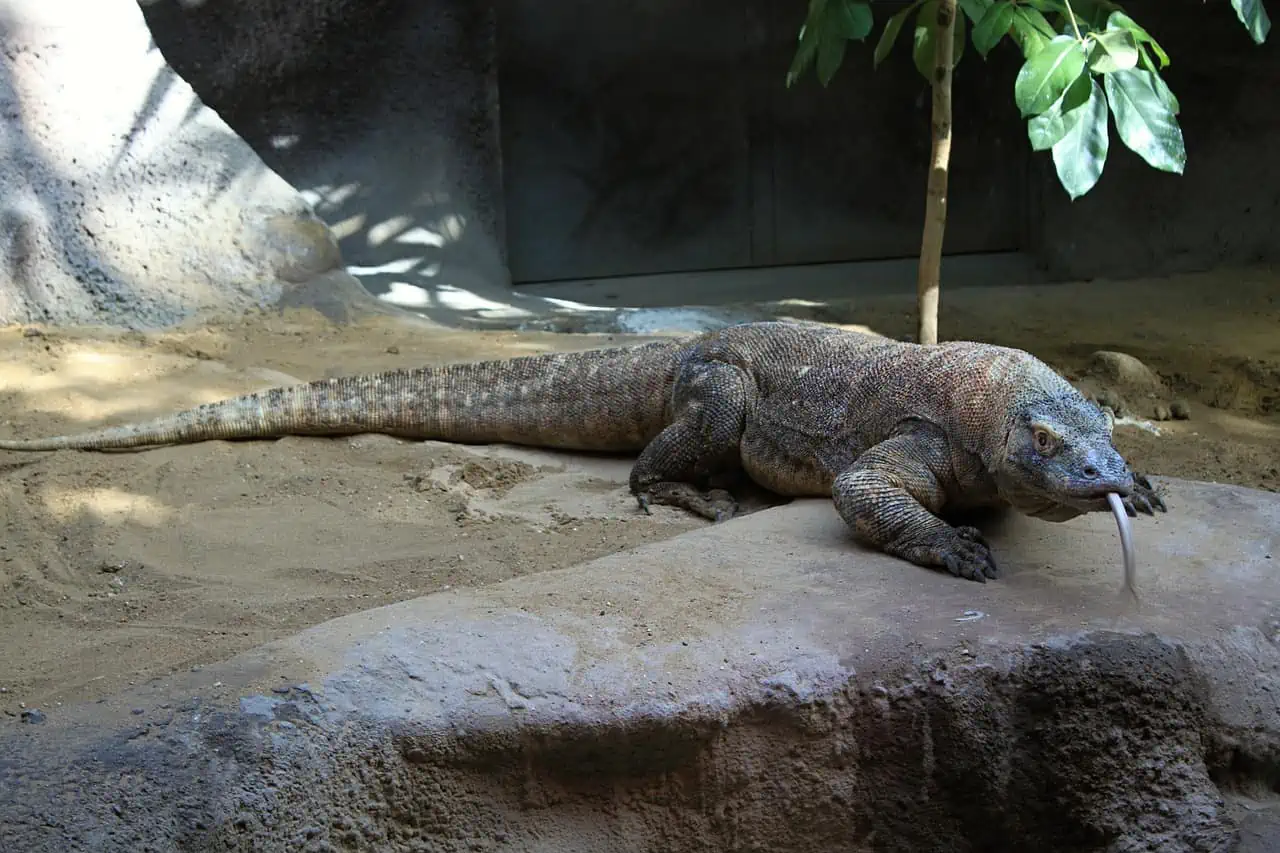
Rather than using their nostrils, Komodo dragons use their tongue. They have yellow, forked tongues split into two sharp points, just like the tongue of snakes. They can detect rotten prey 4 to 9.5 kilometers (or 2.5 to 5.9 miles) away while they swing their heads and flick their tongues in and out.
Mating of Komodo dragons happens between May and August.
During mating season, female Komodo dragons produce scent in their poop for males to follow. When a male Komodo dragon locates a female, he will rub her body and scrape her back.
To show interest in the male Komodo dragons, the female will lick him back. Sometimes males Komodo dragons fight to gain mating rights.
Female Komodo dragons can also reproduce without males.
Female Komodo dragons can get pregnant the traditional way. But in the absence of a male, they can reproduce through Parthenogenesis or “virgin birth.” Parthenogenesis is the production of an embryo from an unfertilized egg. Since female dragons have both chromosomes of male and female, they can reproduce on their own. Through this method, all offsprings would be male.
Komodo dragons lay eggs once a year.
They lay eggs between August and September. They create decoy and camouflage nests to prevent predators and other Komodo dragons from eating their eggs. Furthermore, they can build their nests anywhere from the hillside, mound, or in the ground.
Komodo dragons have 60 sharp teeth.
Komodo dragons have 60 saw-like teeth that are as sharp as blades. They use these to tear off the meat into large chunks that they swallow whole. Their teeth regrow or replace once lost or damaged. Komodo dragons can go through four or five sets throughout their lifespan.
It is illegal to keep Komodo dragons as pets.
In all states of the United States, it is illegal to own a Komodo dragon as a pet. There are different reasons why it is prohibited; it is a dangerous animal and a poisonous animal; Komodo dragon is one of the endangered species. Only zoos and reserves are allowed to own Komodo dragons. Keeping a komodo dragon requires a lot of space and tons of meat.
Some people believe that Komodo dragons are trainable.
Some zookeepers believe that Komodo dragons are intelligent and trainable. They say that Komodo dragons seem to like being touched on the head and back, while some people believe that they can be trained to be tame. However, there is a limit to this. Komodo dragons can be tamed not to eat you, as long you provide food for them, but they cannot be trained like dogs or cats to follow instructions.
Komodo dragon would win a fight over a lion.
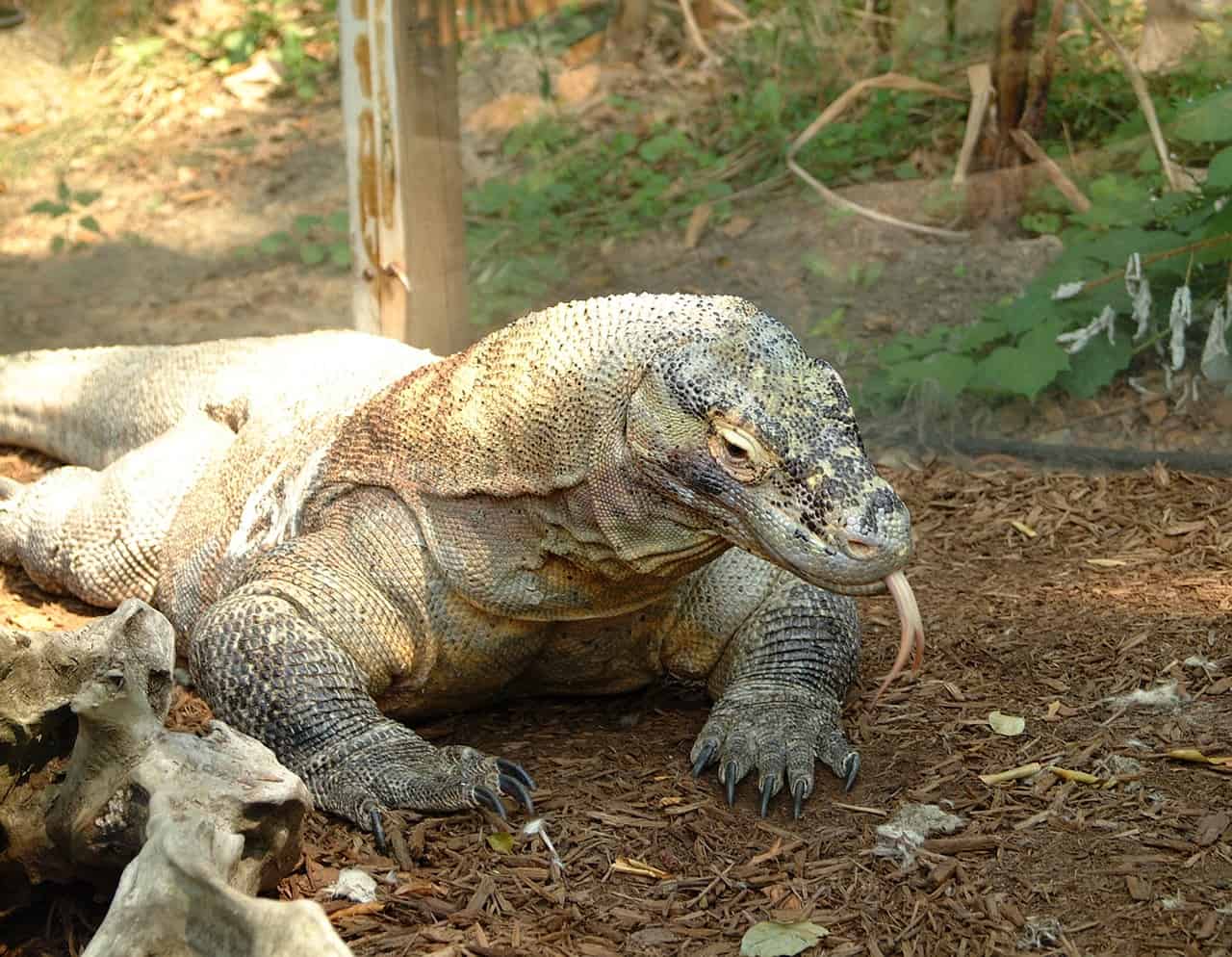
Have you ever wonder who would win if ever a lion and a Komodo dragon fight? These two animals are both powerful and possess great fighting skills. The lion can tear a Komodo dragon into pieces. However, the Komodo dragon has venom and highly susceptible to bacteria and toxins. If the Komodo dragon manages to bite the lion, the lion will be poisoned and die.
Komodo National Park is inhabited by around 5,700 giant lizards.
Komodo National Park is situated in Indonesia and was founded in 1980 to protect giant lizards. It has a land area of 1,733 km2. or square kilometers. The water surrounding the island is rich in marine biodiversity. In 1991, the park was declared a UNESCO World Heritage Site and dedicated to protecting other marine species.
George W. Bush received a Komodo dragon as a gift.
In 1990, the 43rd US President, George W. Bush, received a male Komodo dragon. It was a gift from the Indonesian President at the time, Suharto. Accordingly, Bush named the Komodo dragon “Naga” and later donated the animal to Cincinnati Zoo, located in Ohio.
Naga died in 2007.
Naga was one of the biggest and oldest Komodo dragons. It measured 9 feet long or 108 inches and passed away in 2007. During its life in the Cincinnati Zoo, it produced 32 baby Komodo dragons, which were donated to other zoos. Naga was one of the zoo’s main attractions with more than 1 million visitors yearly.
Komodo dragons have made more than 20 recorded human attacks.
Though attacks on humans are uncommon, both in the wild and captivity, Komodo dragons have caused several human deaths. From 1974 to 2012, various records show that there are already 24 human attacks, and five of these are deadly. Most of the victims are people who lived around Komodo National Park, Indonesia.
Komodo dragons are vulnerable to become extinct.
Komodo dragons are considered endangered species, with only about 3,000 to 5,000 of them remaining in Indonesia. The primary threats to Komodo’s survival are loss of habitat due to human settlement, illegal hunting, predation, and lack of large prey such as deer. Moreover, the lack of female Komodo also contributes to their decreasing population.
Komodo dragons can live for more than 30 years.
It takes eight to nine years for a Komodo dragon to fully mature. A Komodo dragon’s life span is more than 30 years, both in the wild and in captivity. However, Komodo dragons caught in the wild are more prone to parasitic disease and other infections.
Lieutenant van Steyn van Hensbroek was the first to document Komodo dragons.
In 1910, a member of the Dutch Army, Lieutenant van Steyn van Hensbroek, heard rumors about the giant lizard and went to Komodo Island. When he got there, he caught and killed a nine-foot-long Komodo. He sent the skin and photographs of the Komodo dragon to Peter A. Ouwens, a Dutch scientist. Later on, Ouwens found out that the reptile was a Komodo dragon or a monitor lizard.
Komodo dragons avoid human interaction.
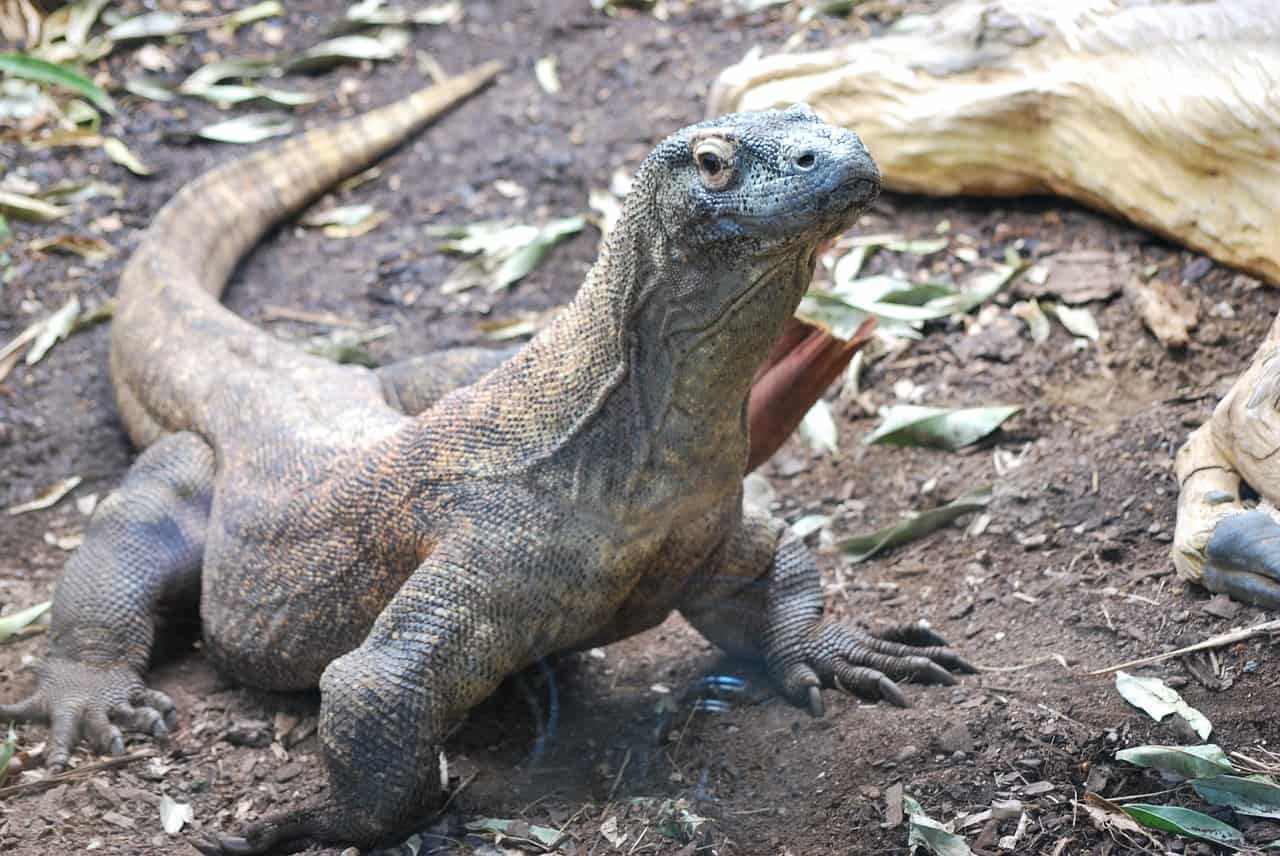
Generally, Komodo dragons avoid encounters with people. They seem to be shy and will immediately flee to their hideouts if a human gets close to them. If they have a close encounter with humans, they began to react violently by hissing, opening their mouths, and swinging their tails.
Eating habits of Komodo dragons follow a ranking.
Komodo dragons have a home range, a specific territory, and sometimes these territories overlap. When food is found in a shared home range, the bigger Komodo dragon gets to eat first. Then, followed by smaller male Komodo dragons, after they are the female Komodo dragons. The last to eat are the young ones where they eat what the adults have left.
Running in a zigzag pattern will keep you safe from a Komodo dragon.
Running in a zigzag pattern will make the Komodo dragon stop attacking you because that is an unusual motion to them. They can only run straight ahead. Climbing trees or other high places may also save you from a Komodo dragon attack.
Komodo vs. Cobra is a film that features an island inhabited by two species.
Komodos are also big parts of mainstream culture! The 2005 horror monster film Komodo vs Cobra, directed by Jim, is about a team of environmentalists who went to a military island to test a formula that can make species and plants grow bigger. The said formula got to Komodo dragons and cobras. As result, the animals grew to enormous sizes and rampaged the island eventually!
Was this page helpful?
Our commitment to delivering trustworthy and engaging content is at the heart of what we do. Each fact on our site is contributed by real users like you, bringing a wealth of diverse insights and information. To ensure the highest standards of accuracy and reliability, our dedicated editors meticulously review each submission. This process guarantees that the facts we share are not only fascinating but also credible. Trust in our commitment to quality and authenticity as you explore and learn with us.
